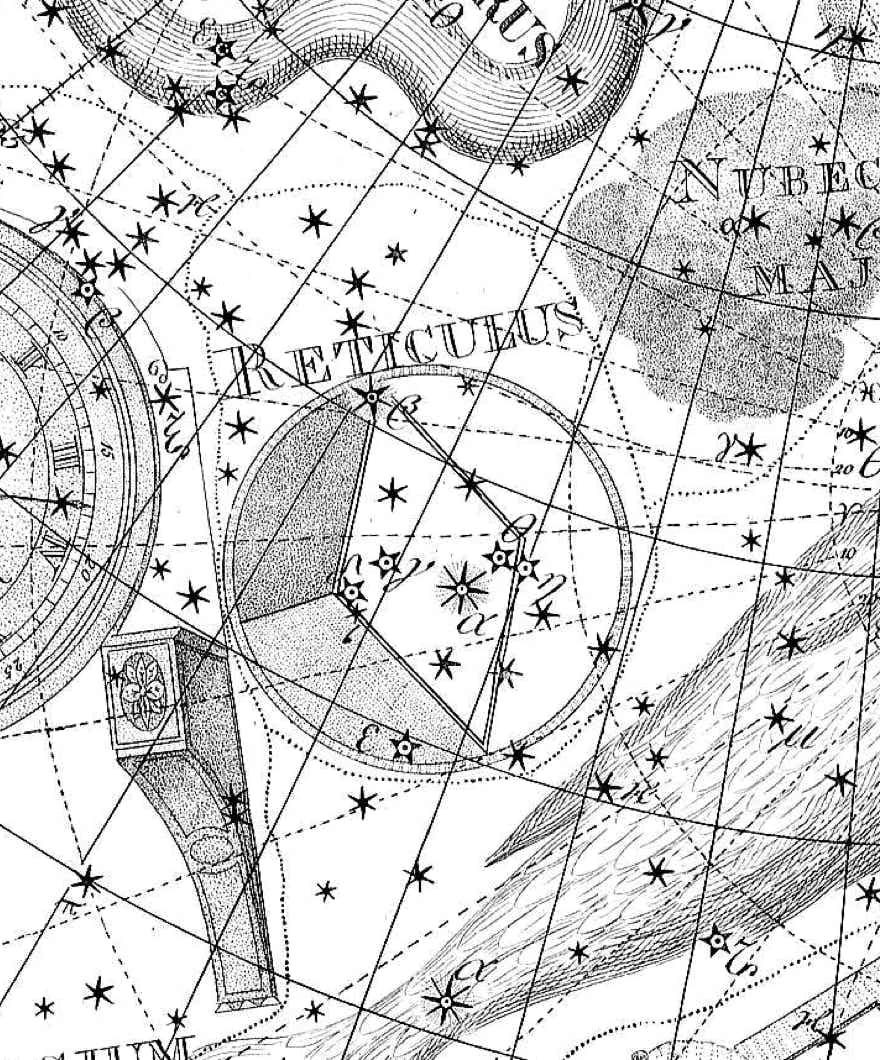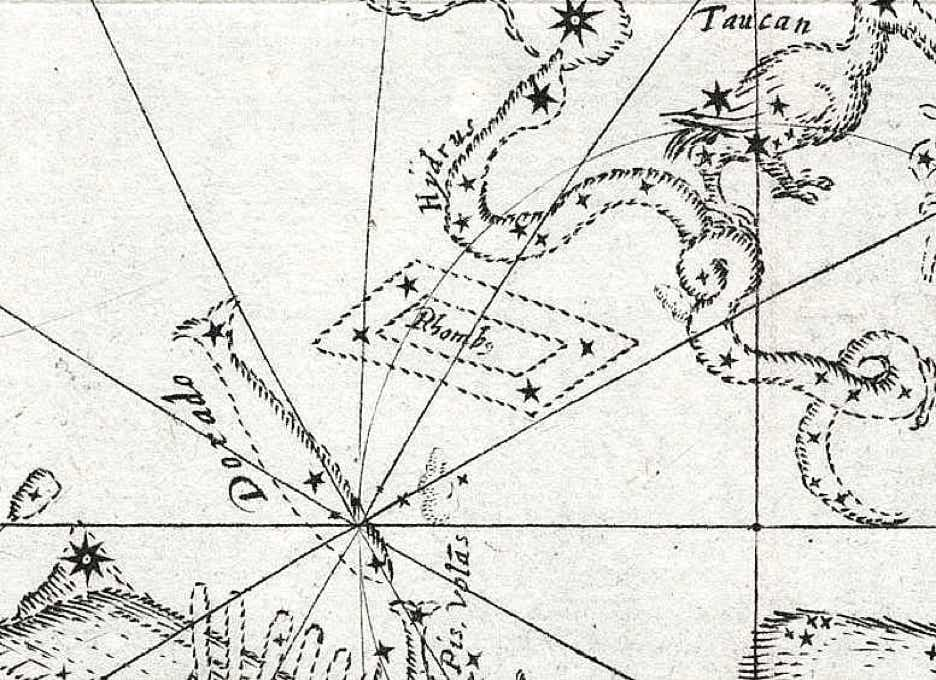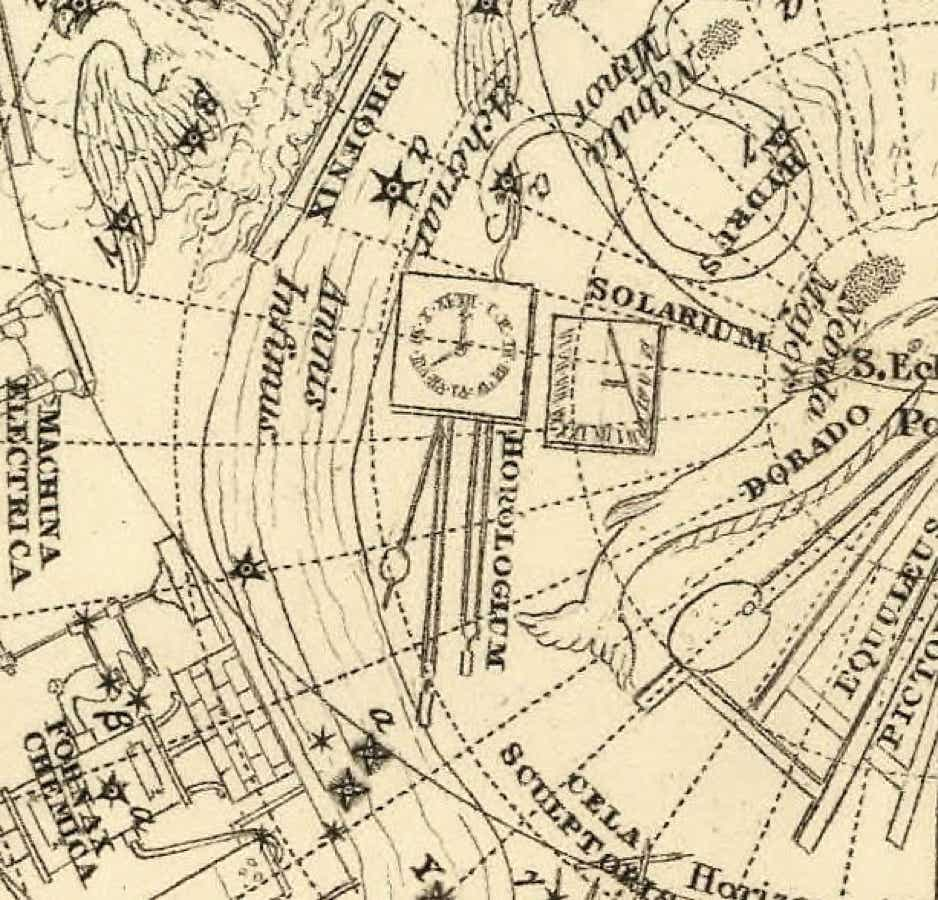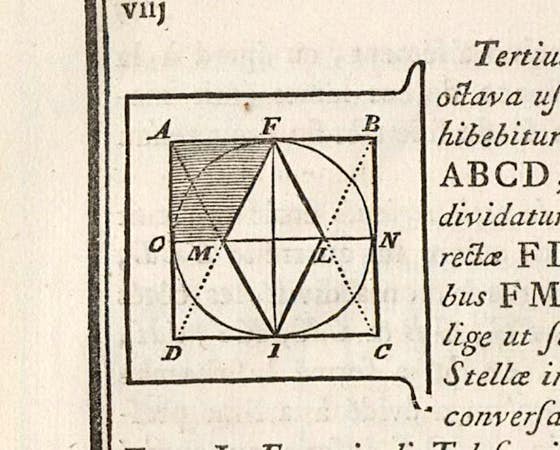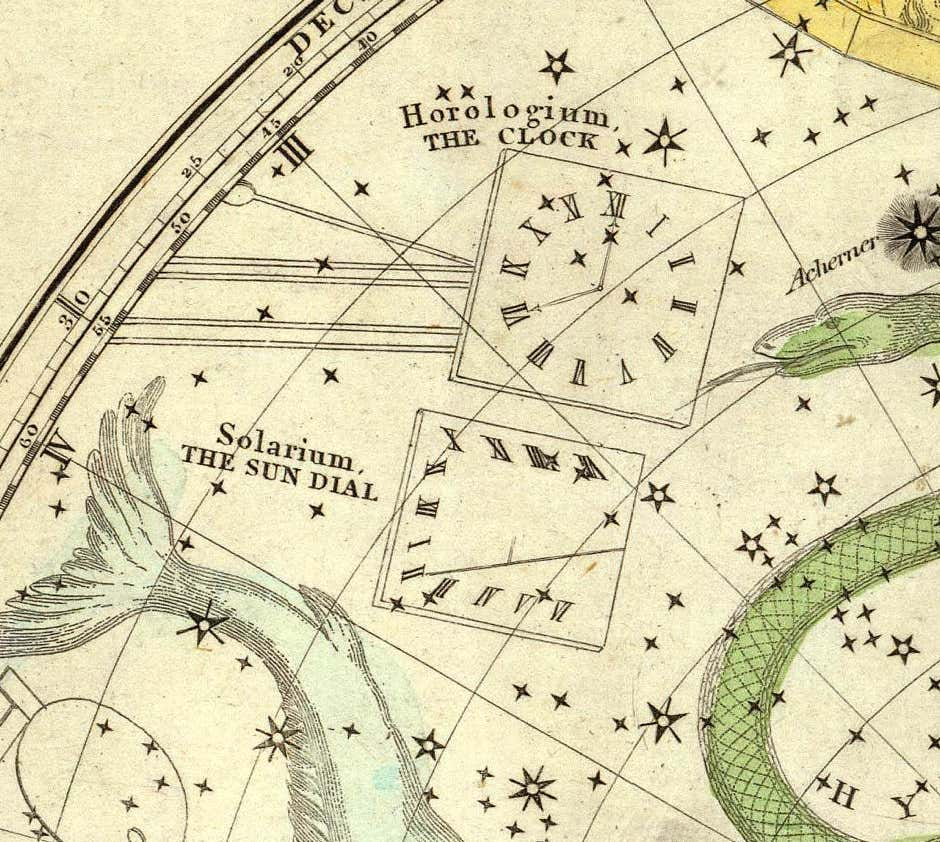
Genitive: Reticuli
Abbreviation: Ret
Size ranking: 82nd
Origin: The 14 southern constellations of Nicolas Louis de Lacaille
A small southern constellation, introduced by the French astronomer Nicolas Louis de Lacaille to commemorate the reticle in the eyepiece of his small telescope with which he catalogued the southern stars from the Cape of Good Hope in 1751–52. It consisted of a diamond-shaped aperture cut from a copper plate inserted into the eyepiece which helped him measure the position of stars as they passed through the field of view, as shown in Lacaille’s diagram. In the sky it lies conveniently next to Lacaille’s observatory clock, Horologium, which he used for timing the passage of stars through the reticle.
In the notes to his southern star catalogue published by the French Royal Academy of Sciences in 1756 Lacaille described it as ‘The little instrument used to draw up this catalogue. It is constructed by the intersection of four lines drawn from each corner of a square to the middle of the two opposite sides.’ He originally gave it the French name le Reticule Romboide on his first chart published in 1756, and simply called it le Réticule in the accompanying star catalogue, but Latinized the name to Reticulus (sic) on the revised edition of 1763; on that second chart he also labelled its stars with Greek letters. The name became Reticulum in Benjamin Gould’s Uranometria Argentina catalogue of 1879.
The constellation’s brightest star, Alpha Reticuli, mag. 3.8, was named Rhombus by the International Astronomical Union in 2024 to memorialize an earlier constellation in this area (see below).
Reticulum, shown on Chart XX of Johann Bode’s Uranographia under the name Reticulus, which is what Lacaille, its inventor, had called it. In Lacaille’s design the top left sector, shown here with dark shading, was solid metal. The lighter shading in the lower left sector of Bode’s depiction seems to be an artistic error. See here for Lacaille’s original depiction.
Rhombus, an obsolete precursor
Lacaille’s Reticulum replaced a previous constellation in this area called Rhombus that was introduced in 1621 on a globe by the German astronomer Isaac Habrecht II (1589–1633). Rhombus later appeared in print in Habrecht’s Planiglobium Coeleste, et Terrestre published in 1628 (see below). Habrecht’s Rhombus, though, was considerably larger than Lacaille’s Reticulum and extended farther south. It consisted of the present-day Alpha and Beta Reticuli plus Gamma and Nu Hydri, forming a quadrilateral in the space between Dorado and Hydrus.
Rhombus, the precursor to Reticulum, shown in a chart from Isaac Habrecht’s Planiglobium Coeleste of 1628. The squiggle at the end of the name is the scribal abbreviation for ‘-us’.
Solarium, an attempted replacement
In his Celestial Atlas of 1822 the British amateur astronomer Alexander Jamieson (1782–1850) replaced Reticulum with Solarium, the sundial, presumably reasoning that it would make a good companion to the pendulum clock. Jamieson's sundial was copied by the American Elijah H. Burritt (1794–1838) on his Atlas Designed to Illustrate The Geography of the Heavens of 1835, but was not otherwise widely adopted.
Solarium, the sundial, seen in place of Reticulum on Plate 28 of Alexander Jamieson’s Celestial Atlas of 1822.
© Ian Ridpath. All rights reserved
Lacaille’s diagram of the large reticle in his telescope’s eyepiece used for measuring the meridian crossing time of stars, from his book Coelum australe stelliferum. The vertical line FI was aligned in the meridian, and the average of the times of a star’s entering and leaving the rhombus gave the time of its meridian crossing. The solid sector at upper left helped the observer judge whether the star had passed through the upper or lower part of the reticle, from which the star’s declination could be calculated.
Reticulum was originally called Le Réticule rhomboïde by Lacaille, who described it as the ‘petit instrument astronomique qui a servi à dresser ce catalogue’ in the notes to his preliminary catalogue and chart published in the Histoire de l'Académie royale des sciences in 1756.


